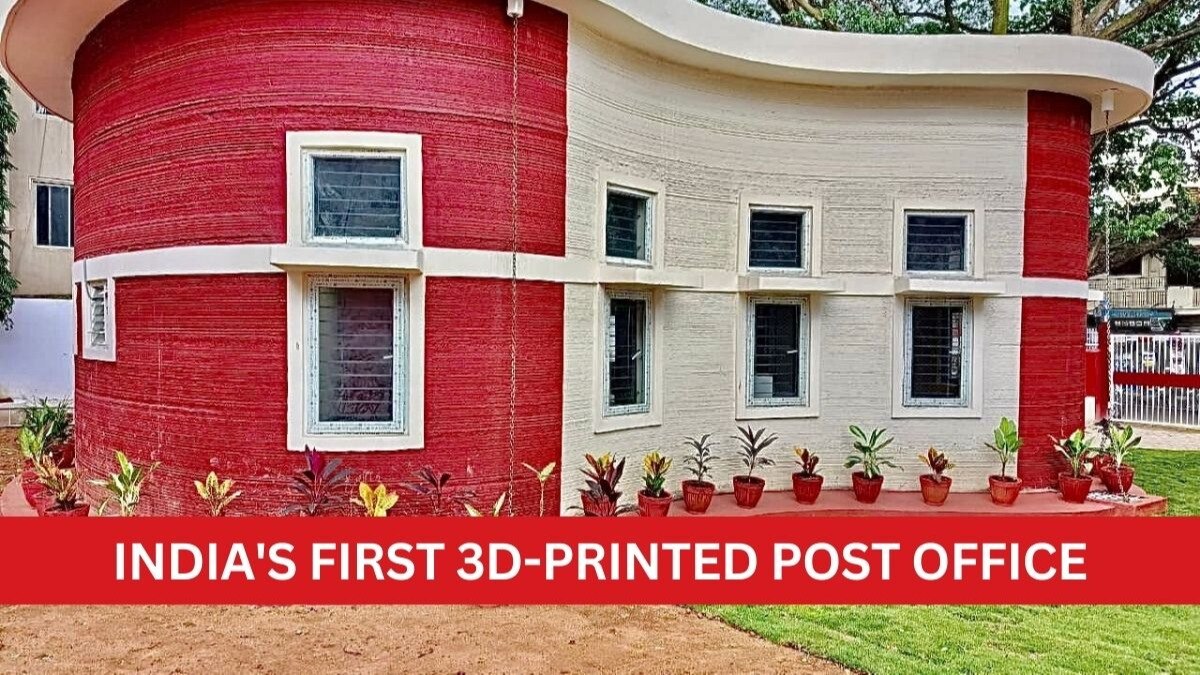India’s 3D-Printed Post Office: A Construction Revolution?
India’s recent unveiling of its first 3D-printed post office in Bangalore hints at a groundbreaking era in construction technology. This achievement, while overshadowed by other news, holds the potential to transform not only India’s construction landscape but also global building practices.
Swift Construction and Cost-Efficiency

India’s 3D-Printed Post Office
Spanning 1,021 sq ft and costing approximately 23 lakhs, this project, executed by Larsen & Toubro with technological support from IIT Madras, sets a new standard in construction speed. George Abraham of L&T noted, “Thanks to robotic precision and pre-embedded designs, we completed the construction in just 43 days, a remarkable departure from the traditional 6-8 months.”
Environmental Advantages of 3D Printing
The environmental merits of 3D printing are undeniable. This technology minimizes material waste by using precise quantities, reducing the need for material transportation and potentially curbing carbon emissions. Following the wisdom of French engineer Antoine de Saint-Exupéry, 3D printing optimizes designs for structural efficiency, resulting in lower concrete usage and reduced resource consumption compared to conventional methods.
A Boon for Developing Nations
While India often faces delays in governmental projects, this 3D-printed post office was completed well ahead of schedule. In a country grappling with a need for substantial infrastructure development and budget constraints, 3D printing emerges as a cost-effective solution.
Beyond construction time reductions, there’s a significant decrease in labor costs and material wastage. This innovation holds the potential to facilitate swift disaster relief shelters, military installations, and even affordable housing solutions in a nation with over 1.4 billion people.
The Technological Marvel Behind It
The cornerstone of this project is the BOD2 3D printer, crafted by Danish firm COBOD. Distinguished by its IP66 rating, it functions seamlessly in wet and dusty environments. Its modular design offers scalability, catering to projects of varying sizes. Moreover, the steel nozzle not only controls dimensions but also smoothens or textures walls during printing, minimizing the need for post-printing finishing work.
The extruder handles aggregates up to 10 mm, enabling concrete printing at impressive speeds of up to 1000 mm/s. Even without a safety fence, it maintains a respectable speed of 250 mm/s, with just three to four operators needed to oversee this advanced 3D printer.
India’s Journey Towards Competitiveness
To compete in the global manufacturing arena, India must embrace 3D printing. Its rival, China, dominates with a 30 percent market share, earning the moniker “world’s factory.” While 3D printing is relatively new compared to traditional manufacturing, it is rapidly gaining ground. Forecasts suggest that the global 3D printing market will reach $19.9 billion by the end of 2023. To align with its “Make in India” initiative, India should champion and adopt 3D printing technology.
FAQs to India’s 3D-Printed Post Office:
Q1: What sets 3D printing apart in terms of environmental benefits?
A1: 3D printing minimizes material waste, reduces transportation needs, and optimizes designs for structural efficiency, potentially curbing carbon emissions.
Q2: How does 3D printing benefit developing nations like India?
A2: It offers cost-effective construction solutions, speeding up projects, reducing labor costs, and minimizing material wastage, making it suitable for disaster relief and affordable housing.
Q3: What technology made the 3D-printed post office in India possible?
A3: The project used the BOD2 3D printer by COBOD, known for its adaptability, efficiency, and ability to handle challenging environments.
Q4: Why is India’s adoption of 3D printing crucial for competitiveness?
A4: Embracing 3D printing is essential to compete globally in manufacturing, particularly against China, and aligns with the growing global 3D printing market.

